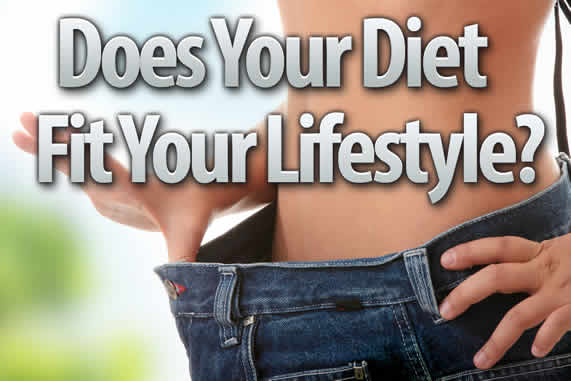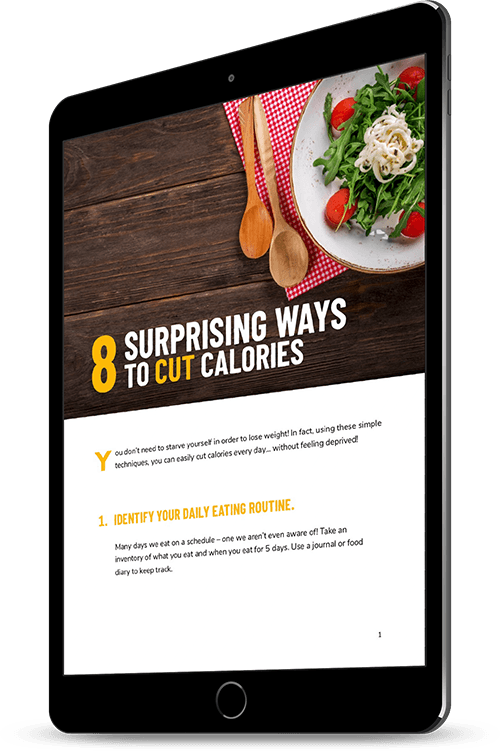Choose a Diet to Fit Your Lifestyle

 Lots of people think diets are about losing weight, but that is not necessarily the case. Sometimes, most of the time in fact, diet is about keeping healthy.
Lots of people think diets are about losing weight, but that is not necessarily the case. Sometimes, most of the time in fact, diet is about keeping healthy.
Now, when you are thinking about what sort of diet you should adopt, there are two factors that you need to consider.
They are:
- Your lifestyle
- Your Body Mass index, otherwise known as BMI
Lifestyle
So, lets first consider what sort of lifestyle you may lead. Do you lead an active lifestyle?
For example:
- Are you a manual worker?
- Do you work out a lot at the gym and/or play sports?
- Do you walk long distances and/or are on your feet all day?
Or do you lead a passive lifestyle? Examples of this include:
- Having a sit down job
- Travelling everywhere by car
- Not being particularly active at home
Body Mass Index (BMI)
Next we need to evaluate your body mass index (BMI). You can work out your BMI very simply. First of all you divide your weight in kilograms (kg) by your height in metres (m.) You then divide that result by your height in metres again and the result is you BMI.
- If your BMI is less than 18.5 that means you are under weight for your height.
- Between 18.5 and 24 9 is a healthy weight.
- Between 25 and 29.9 is overweight
- And if your BMI is over 30, then you are technically obese.
If you are under weight or obese then you really should see your doctor as soon as possible because there may be some underlying health issue that is causing your obesity.
If you are over weight, then you should adopt a weight loss diet. Now, the subject of weight loss falls outside the scope of this blog post, but plenty of information on how to lose weight can be found by doing a search of this blog or the internet in general.
One note of caution: these BMI figures apply to adults only and should not be applied to children or to pregnant women.
The rest of this blog post we are going to concentrate on the people who have a healthy weight. In other words, those whose body mass index is between 18.5 and 24.9.
Active Lifestyle
Now, if you lead an active lifestyle, then carbohydrates are the key to healthy eating. Carbohydrates deliver glucose into your bloodstream for immediate energy. The rest is stored in muscles as glycogen. The more glycogen your muscles store, the longer you will remain active before you begin to feel tired.
High carbohydrate foods include:
- Whole grain bread
- Pasta
- Cereal
- Rice
- Fruit
- Legumes
- Dairy products
Something else you should do if you lead an active lifestyle is increase your protein intake. Protein is used to repair muscle tissues and support a healthy immune system.
Good sources of protein include:
- Lean meat
- Poultry
- Fish
- Egg white
- Legumes
- Tofu
- Whey protein
You should also drink plenty of fluids, preferably water, and boost your calcium, Vitamin B12 and Iron intakes, by taking a multi vitamin supplement every day.
Passive Lifestyle
On the other hand, if you live a passive lifestyle then you require fewer calories and protein each day, but you still need proper nutrition to avoid malnutrition and gaining excess body weight. So, you should eat the same sorts of foods as an active person, but in smaller amounts, and you should reduce your calorific intake.
Women who live a passive lifestyle require fewer calories than men who live a similar lifestyle. According to the United States Department of Agriculture or USDA, women should aim to consume around 1800 calories per meal and men should aim to consume around 2400 calories per meal.
A good way to determine exactly how many calories you are eating is to go to http://thecaloriecounter.com. This site is designed primarily for people who want to lose weight but it can be used for other purposes as as well.
To use the calorie counter you enter a specific food in the search field to see the nutritional facts and figures for that particular food, or you can either chose a food group from the drop down menu or browse through the different food categories on the website and then pin point a specific food by drilling down through the available choices. Suffice to say, it can be very interesting to see how many calories are in each particular food and often it is more or less than one may have imagined.
Elderly People who live a passive lifestyle should consume more protein than younger people. According to the Journal of the American Geriatrics Society, they should consume 1.0 to 1.2 grams of protein per kilogram, or about 0.45 to 0.55 grams of protein per pound of body weight each day.
But, wherever possible, whether you lead an active or a passive lifestyle, you should eat only fresh foods, preferably organically grown or free range. And you should avoid processed foods because processed foods tend to be high in salt, sugar and fats.
CLICK HERE to Explore Our Free Online Courses


Responses